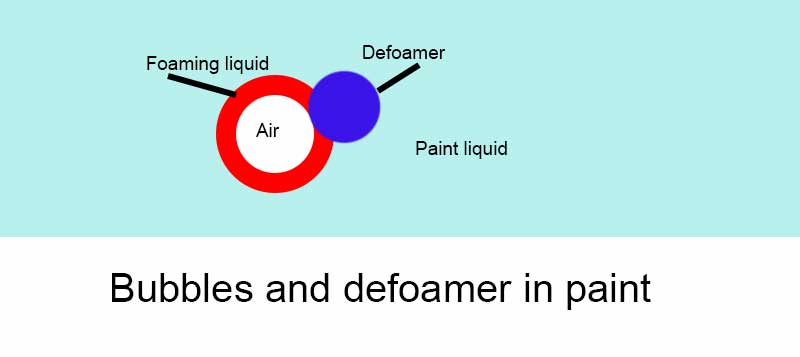Choosing the Best Defoamers for Your Manufacturing Line
Choosing the Best Defoamers for Your Manufacturing Line
Blog Article
The Function of Defoamers in Enhancing Product Quality and Performance
In various producing processes, the presence of foam can considerably hinder item top quality and functional performance. Defoamers function as essential additives that minimize this concern, making sure smoother manufacturing operations while boosting the visual and functional attributes of the end products (defoamers). Their application extends a multitude of sectors, from food and beverage to pharmaceuticals, where uniformity and dependability are critical. The selection of the suitable defoamer can be essential to attaining optimum outcomes, increasing vital inquiries about formula compatibility and performance metrics that warrant additional expedition.
Understanding Defoamers
Recognizing the duty of defoamers is essential for preserving item quality throughout different industries. Defoamers are chemical additives developed to decrease and protect against the development of foam in liquid systems, which can detrimentally impact procedures such as mixing, loading, and surface tension. Frothing can cause inadequacies, product defects, and endangered aesthetic charm, making defoamers a critical component in making operations.
In industrial applications, defoamers assist to boost product consistency and security. The effective usage of defoamers not only makes certain smoother production processes yet likewise contributes to superior item performance.
Furthermore, the option and solution of a defoamer must align with particular application demands, such as compatibility with other components, efficiency under varying temperature level and pH conditions, and possible regulative restraints. Ultimately, understanding defoamers' features and their importance in different formulas is critical for optimizing manufacturing and making sure the finest output.
Kinds Of Defoamers
Defoamers can be categorized into several kinds based on their composition and mechanism of action. The key types consist of silicone-based, non-silicone organic, and not natural defoamers.
Silicone-based defoamers are among one of the most efficient, mostly due to their ability to spread out rapidly on the fluid surface area and interfere with foam formation. Their unique chemical structure permits exceptional security, making them ideal for high-temperature applications and atmospheres with varying pH degrees.
Non-silicone natural defoamers, usually composed of fatty acids or all-natural oils, are valued for their biodegradability and reduced toxicity. These are usually utilized in food and beverage applications where safety and ecological influence are paramount.
Inorganic defoamers, that include substances like talc or calcium carbonate, act by boosting the thickness of the liquid, thereby lowering foam security. They are frequently used in industrial processes where compatibility with various other products is not a concern.
Each type of defoamer has distinctive advantages and restrictions, allowing for tailored options depending on the specific lathering problems run into in various applications. Comprehending these differences is essential for optimizing performance and accomplishing desired item high quality.
Applications Across Industries
Many sectors leverage defoamers to enhance product quality and functional efficiency. In the food and beverage field, defoamers are essential in procedures such as brewing and dairy production to avoid foam formation, which can lead to inefficiencies and item variance. By regulating foam, makers can make certain better return and an extra uniform product.
In the pharmaceutical market, defoamers play a vital role in the solution of fluid medications, where excessive foam can hinder blending and exact dosing. Their use helps maintain the honesty of the solutions and helps with smoother production procedures.
The paint and coverings sector also counts on defoamers to boost the efficiency of products during application. By decreasing foam, these additives ensure a smoother surface and improve the visual qualities of the last product.

Advantages of Using Defoamers
While the application of defoamers differs throughout markets, their benefits regularly enhance product quality and procedure effectiveness. One considerable advantage is the reduction of foam formation throughout producing processes, which can or else lead to manufacturing delays and disparities in item top quality. By minimizing foam, defoamers make it possible for a smoother circulation of products, assisting in more effective procedures and reducing the chance of devices malfunctions.
Additionally, the usage of defoamers can improve the look and texture of end products. In sectors such as coverings, paints, and food processing, extreme foam can compromise the aesthetic aesthetic appeals and general quality, while the suitable defoamer application makes sure an uniform surface and preferable features. Defoamers can contribute to cost financial savings by lowering waste throughout production and enhancing the use of raw materials.
.png?width=250&height=140&name=35722%20BOR%20Defoamers%20Ad_V8-BACKGROUND%20(2).png)
Selecting the Right Defoamer
Selecting the ideal defoamer is important for optimizing production procedures and guaranteeing item quality. The choice of defoamer affects not look what i found just the efficiency of foam control but likewise the total efficiency attributes of the end product. Aspects to take into consideration consist of the kind of application, the chemistry of the formula, and the environmental conditions under which the product will be utilized.
Various sectors might need details defoamer types, such as silicone-based, natural, or polymeric defoamers. Comprehending the compatibility of the defoamer with the key active ingredients is vital to stay clear of damaging responses that can jeopardize product honesty. In addition, the defoamer's effectiveness in different temperatures and pH degrees must be reviewed to make certain regular efficiency.
Checking the defoamer in small-scale applications can offer useful understandings right into its performance and viability. Consideration of regulatory compliance, especially in food, pharmaceuticals, and cosmetics, is paramount in choosing a defoamer. Eventually, a comprehensive evaluation of these variables will cause the selection of a defoamer that not just Full Article regulates foam properly but additionally improves the high quality and efficiency of the last product.
Verdict

In conclusion, defoamers are crucial ingredients that dramatically boost item quality and efficiency across different markets. The tactical selection and application of defoamers lead to cost savings, optimized resource usage, and enhanced customer contentment.
Foaming can lead to ineffectiveness, item defects, and compromised aesthetic appeal, making defoamers an essential part in making operations.

Report this page